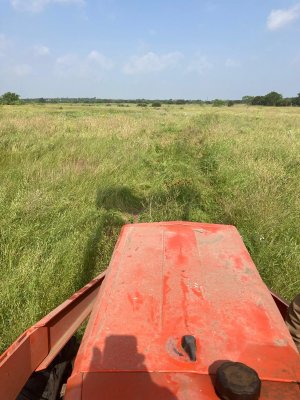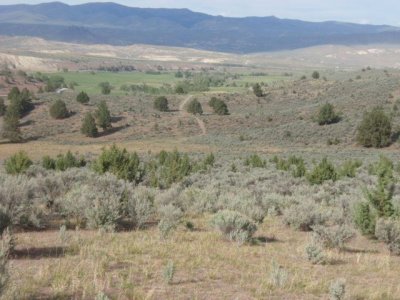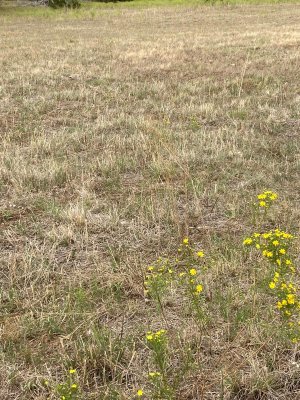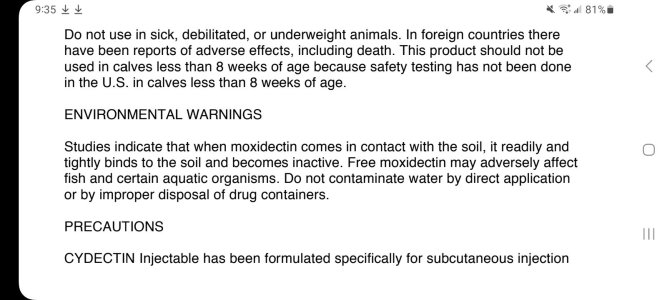I'm with
@Brute 23. The argument I had to have 3 to 5 times with family this last winter over not feeding any hay was tough, but I finally won it. I was accused of abusing cattle more than once when I said it's OK to let them lose a point on their BCS during the winter if they were in good condition at fall breeding. Luckily, the green winter grass and early spring is making me look good.
If they all calve on time this fall, I think I will have won the argument for good.
But I wouldn't pay attention to my posts on grass just yet
@4hfarms. Haven't really proven anything yet.
If I can get up to 9 or 10 head that consistently calve in the fall and don't need hay, then I think that would mean something. But the central Texas weather seems to mandate slower going than I'd like. My prediction is that fall rains will not be consistent this year, so I might be back in drought management mode.
One thing I am proud of is that we had a 10 inch rain in October and then an 8 inch rain here in early May and my soil was covered up enough that we had no erosion, even though all the Ashe Juniper needles got washed off of our 3% slopes and out into the middle of my crop fields. I figure the needles will help lower the PH back towards 7 (my soil ph is 7.9), so I'm pretty sanguine about it.
But if anyone in central Texas is thinking on moving to year-round grazing, I'd say really check it out. It is looking quite feasible, and I've been surprised to find that central Texas cattle could even potentially have native green grasses year round to forage on. Supposedly our place has wild rye, Texas winter grass, burr clover, and maybe some fescue (not sure). And this way of grazing your place is quite simple.
You just need:
1) Multiple paddocks for rotation and stockpiling (I have 6 paddocks, but electric fences are a cheap way to do this).
2) Moderate framed cows that are medium to low milkers (I have angus/red angus genetics crossed with corriente and Hereford). If you have heavy milkers, this is not the way to go. They'll lose too much condition on stockpile in a bad winter. Too many of your cows won't breed back or will lose calves.
3) A good water set up so you can always rotate them like you want. We always give them access to at least one pond and one well-fed water trough, unless we are there. If we are there then sometimes just a water trough if we want to intensively graze a paddock.
4) Soil that has high water storage capacity. The clay loam that covers most of my place will hold about 10 inches of water. This is important so that your grass can stay green long after the rain stops. I have found that, as long as you don't graze it, some grasses will even keep green through August if you had good May/June rain. This can give your cows green grazing even when the surrounding countryside is covered in dry/brown/dead grass. Once you graze it in late June/July/August, though, it turns brown and dry quickly and doesn't grow until Sept/Oct rains.
5) Judicious use of 30% cooked protein tubs and salt. To this point, I have just kept out a tub full time. The cows don't actually hit the tub that hard if they have green grass. Also, to slow down their consumption on a partially eaten tub if you do get rain, you can just throw a salt block directly on top of the tub. That also slows them down and makes your money stretch a bit without having to do anything but move a salt block. If things turn dry again I just remove the block and let them have full use of the tub. Because the tubs come with the same minerals as the other products advertised as mineral-only supplements, if your cattle have a tub I wouldn't worry about putting out minerals for them unless they show signs of deficiency, especially when the grass is green.
6) If they have green grass, I wait till the tub is gone and switch to loose mineral mixed with loose salt until conditions require a tube again, then switch back to 5) above.
This method so far seems to be a low cost/low materials/time input method that will pay for the upkeep and taxes of the land. Over the past year I spent most of my time mending fences and controlling brush like mesquites. Haven't spent any time feeding hay or messing with calves, except to load them up to sell. So, again, I recommend it.
Would love to hear from anybody else in central Texas who also uses this method or something similar. Always open to learning how to improve.





